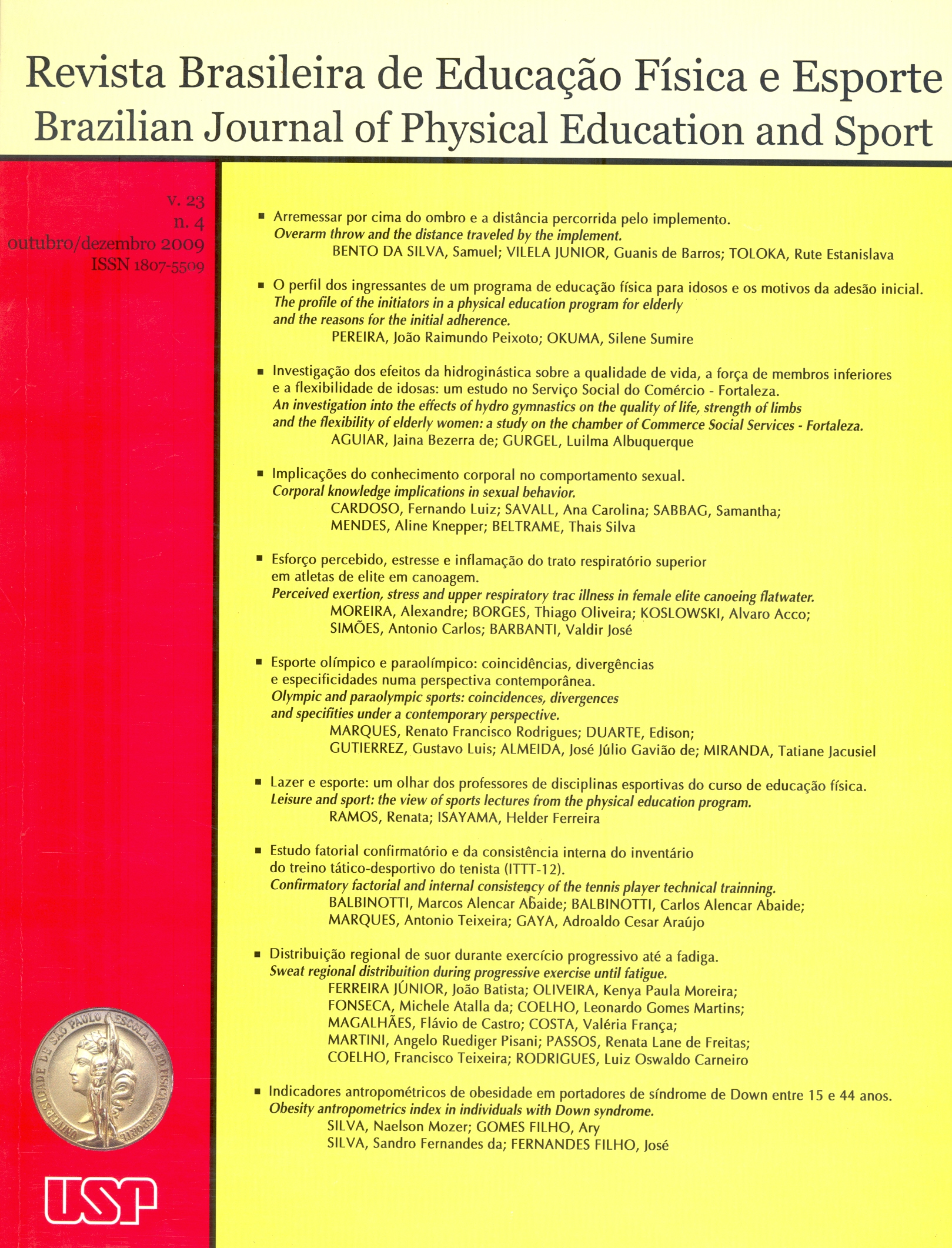Sweat regional distribution during progressive exercise until fatigue
DOI:
https://doi.org/10.1590/S1807-55092009000400009Keywords:
Sweat, Exercise, FadigueAbstract
Considering the hypothesis of human selective brain cooling during exercise should depend on greater sweating mechanism in the forehead. The purpose of this study was verify variations of sweat production between body regions during progressive exercise until fatigue (PEF). Seventeen subjects (23 ± 2 years old, 76.93 ± 7.74 kg, 179 ± 7 cm and 1.9 ± 0.1 m²) volunteered for this study. Local sweat rate (STlocal), number of active sweat glands (ASG) and sweat rate for ASG (STlocal.ASG-1) in eight body regions (forehead, back, chest, arm, forearm, hand, leg and calf) were measured during PEF in cyclergometer. The STlocal of the forehead was higher than in all others regions and the chest STlocal was higher only than the leg. The number of ASG in the forehead was greater than in all other regions, and the ASG of the hand was higher than those of the chest, arm, leg and calf. The STlocal.ASG-1 of the forehead was higher than the arm, forearm, hand and leg, and the STlocal. ASG-1 of the chest and back were higher than the forearm and hand. The sweat production of the upper body (forehead, back, chest, arm, forearm and hand) was bigger than the lower body (leg and calf). In conclusion, the PEF promoted a sweating pattern in body regions that can be related to the higher convection present in the upper regions of the body.Downloads
Download data is not yet available.
Downloads
Published
2009-12-01
Issue
Section
naodefinida
License
Todo o conteúdo da revista, exceto onde está identificado, está licenciado sob uma Licença Creative Commons (CC-BY)
How to Cite
FerreiraJúnior, J. B., Oliveira, K. P. M., Fonseca, M. A. da, Coelho, L. G. M., Magalhães, F. de C., Costa, V. F., Martini, A. R. P., Passos, R. L. de F., Coelho, F. T., & Rodrigues, L. O. C. (2009). Sweat regional distribution during progressive exercise until fatigue . Brazilian Journal of Physical Education and Sport, 23(4), 405-414. https://doi.org/10.1590/S1807-55092009000400009


